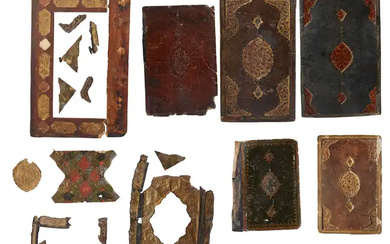Groups and Single Decorations for Gallantry
An exceptional Hurricane and Spitfire pilot’s D.F.M. group of five awarded to Flying Officer J. D. Rudling, 136 Squadron, Royal New Zealand Air Force, who was awarded the D.F.M. for the Defence of Chittagong, and was later shot down and killed over Burma on 29 April 1944Distinguished Flying Medal, G.VI.R. (N.Z.41714. F/Sgt. J. D. Rudling. R.N.Z.A.F.); 1939-45 Star; Burma Star; War Medal 1939-45; New Zealand War Service Medal; New Zealand Memorial Cross, G.VI.R., this last unnamed, good very fine (6) £2,800-£3,200---Provenance: Buckland Dix & Wood, December 1994.D.F.M. London Gazette 12 November 1943.The original Recommendation states: ‘Flight Sergeant Rudling has flown continuously on operations since December 1942. He has been in combat with enemy aircraft on 3 occasions and each time displayed marked courage and determination. In April 1943, he was engaged by an enemy aircraft for 5 minutes but succeeded in shooting it down. A month later, during an enemy attack at Chittagong, he attacked 3 hostile bombers, damaging at least one, but his own aircraft was set on fire by a Japanese fighter. In spite of this, he again attacked an enemy bomber and continued to fire until his own aircraft was blazing and he had to leave it by parachute. Throughout his operational career, this airman has shown outstanding skill in operations.’John David Rudling was born at Vavau, Tonga on 18 March 1922 and emigrated to New Zealand with his parents in 1924. He enlisted in the Royal New Zealand Air Force in March 1940, and after being awarded his flying badge on 6 September 1941 was promoted Sergeant, before embarking for India in June 1942. He arrived in India on 26 July 1942 and was posted to 136 Squadron, operating from Dum Dum in Bengal. Flying Hurricanes he took part in two day and one night patrol before the Squadron moved to Chittagong, near the Burmese border From here he carried our a further 81 operation sorties - interceptions, patrols, bomber and shipping escorts, fighter sweeps, and low-level strafing attacks. During these operations he destroyed two enemy aircraft and damaged another, and on one occasion was forced to bale out.On one occasion Rudling made contact with the enemy - literally: ‘I was just about to turn back for base when I sighted the bombers. Selecting the nearest I I dived to the attack. I observed strikes on the enemy’s wings and then I suddenly realised that we were going to collide. I broke sharply away above but felt my aircraft hit the rudder of the bomber. Thinking I had damaged by aircraft for further attack I pulled away, but it was alright so I pulled up under another bomber and fired from underneath at their leader. During this attack a fighter was on my tail and hit my tail and oil tanks before I broke away.’ (the recipient’s own account refers).Rudling was uninjured in this attack, and also had the satisfaction of seeing the bomber with which he had collided hit the ground and explode before he force-landed on the nearest strip without flaps or brakes. His Spitfire ended up on its nose but did not catch fire possibly because when Rudling landed there was scarcely any petrol left in its tanks.Rudling was commissioned Pilot Officer on 16 April 1943, and two months later 136 Squadron was withdrawn to Calcutta, where they were re-equipped with Spitfires. Promoted Flying Officer on 16 October 1943, the following February the Squadron moved forward again, firstly to Rumkapalong in the Arakan, and then to Sapam in the Imphal Valley. From these bases Rudling engaged in a further 49 operational sorties and succeeded in damaging four enemy aircraft in combat.Rudling was killed in action on 29 April 1944. Taking off with nine other aircraft to make a low-level attack on Kangaung airfield inside Burma, flying Spitfire VIII (JF619) as ‘Janus Red 3’, on nearing the target his flight was jumped by 5 enemy fighters and Rudling was seen to dive down to the assistance of ’Janus Red 1’, inflicting damage on an Oscar before himself being attacked from behind. Soon afterwards fellow pilots saw his Spitfire explode in the air, burning wreckage falling to the ground. His body, recovered by the local Burmese, was buried near to the crash site. In September 1953 the remains were exhumed and reburied at Taukkyan Cemetery, near Rangoon, Burma.Sold with a large quantity of copied research, including a photographic image of the recipient.------For more information, additional images and to bid on this lot please go to the auctioneers website, www.dnw.co.uk
[ translate ]View it on
Estimate
Time, Location
Auction House
An exceptional Hurricane and Spitfire pilot’s D.F.M. group of five awarded to Flying Officer J. D. Rudling, 136 Squadron, Royal New Zealand Air Force, who was awarded the D.F.M. for the Defence of Chittagong, and was later shot down and killed over Burma on 29 April 1944Distinguished Flying Medal, G.VI.R. (N.Z.41714. F/Sgt. J. D. Rudling. R.N.Z.A.F.); 1939-45 Star; Burma Star; War Medal 1939-45; New Zealand War Service Medal; New Zealand Memorial Cross, G.VI.R., this last unnamed, good very fine (6) £2,800-£3,200---Provenance: Buckland Dix & Wood, December 1994.D.F.M. London Gazette 12 November 1943.The original Recommendation states: ‘Flight Sergeant Rudling has flown continuously on operations since December 1942. He has been in combat with enemy aircraft on 3 occasions and each time displayed marked courage and determination. In April 1943, he was engaged by an enemy aircraft for 5 minutes but succeeded in shooting it down. A month later, during an enemy attack at Chittagong, he attacked 3 hostile bombers, damaging at least one, but his own aircraft was set on fire by a Japanese fighter. In spite of this, he again attacked an enemy bomber and continued to fire until his own aircraft was blazing and he had to leave it by parachute. Throughout his operational career, this airman has shown outstanding skill in operations.’John David Rudling was born at Vavau, Tonga on 18 March 1922 and emigrated to New Zealand with his parents in 1924. He enlisted in the Royal New Zealand Air Force in March 1940, and after being awarded his flying badge on 6 September 1941 was promoted Sergeant, before embarking for India in June 1942. He arrived in India on 26 July 1942 and was posted to 136 Squadron, operating from Dum Dum in Bengal. Flying Hurricanes he took part in two day and one night patrol before the Squadron moved to Chittagong, near the Burmese border From here he carried our a further 81 operation sorties - interceptions, patrols, bomber and shipping escorts, fighter sweeps, and low-level strafing attacks. During these operations he destroyed two enemy aircraft and damaged another, and on one occasion was forced to bale out.On one occasion Rudling made contact with the enemy - literally: ‘I was just about to turn back for base when I sighted the bombers. Selecting the nearest I I dived to the attack. I observed strikes on the enemy’s wings and then I suddenly realised that we were going to collide. I broke sharply away above but felt my aircraft hit the rudder of the bomber. Thinking I had damaged by aircraft for further attack I pulled away, but it was alright so I pulled up under another bomber and fired from underneath at their leader. During this attack a fighter was on my tail and hit my tail and oil tanks before I broke away.’ (the recipient’s own account refers).Rudling was uninjured in this attack, and also had the satisfaction of seeing the bomber with which he had collided hit the ground and explode before he force-landed on the nearest strip without flaps or brakes. His Spitfire ended up on its nose but did not catch fire possibly because when Rudling landed there was scarcely any petrol left in its tanks.Rudling was commissioned Pilot Officer on 16 April 1943, and two months later 136 Squadron was withdrawn to Calcutta, where they were re-equipped with Spitfires. Promoted Flying Officer on 16 October 1943, the following February the Squadron moved forward again, firstly to Rumkapalong in the Arakan, and then to Sapam in the Imphal Valley. From these bases Rudling engaged in a further 49 operational sorties and succeeded in damaging four enemy aircraft in combat.Rudling was killed in action on 29 April 1944. Taking off with nine other aircraft to make a low-level attack on Kangaung airfield inside Burma, flying Spitfire VIII (JF619) as ‘Janus Red 3’, on nearing the target his flight was jumped by 5 enemy fighters and Rudling was seen to dive down to the assistance of ’Janus Red 1’, inflicting damage on an Oscar before himself being attacked from behind. Soon afterwards fellow pilots saw his Spitfire explode in the air, burning wreckage falling to the ground. His body, recovered by the local Burmese, was buried near to the crash site. In September 1953 the remains were exhumed and reburied at Taukkyan Cemetery, near Rangoon, Burma.Sold with a large quantity of copied research, including a photographic image of the recipient.------For more information, additional images and to bid on this lot please go to the auctioneers website, www.dnw.co.uk
[ translate ]





